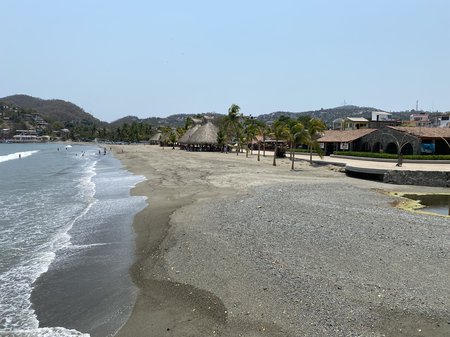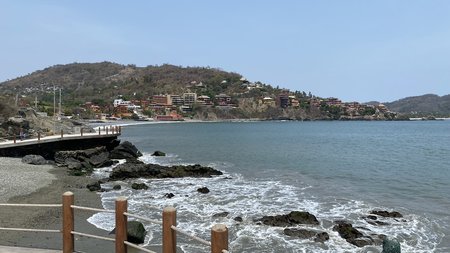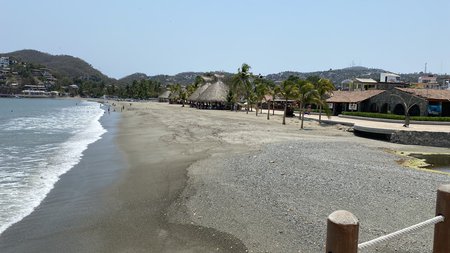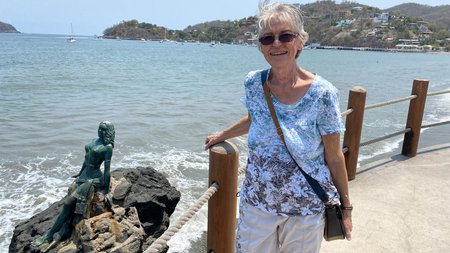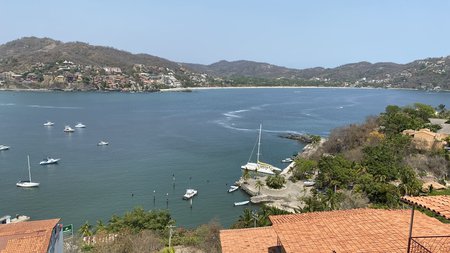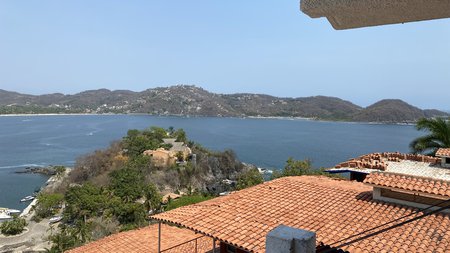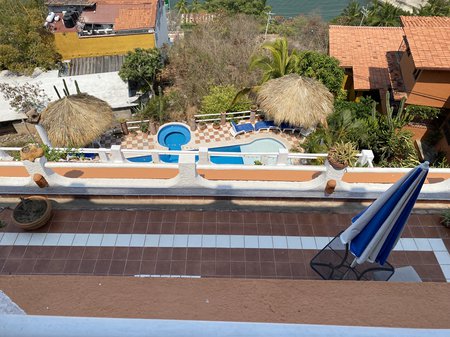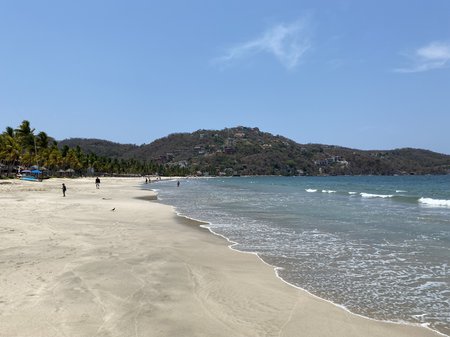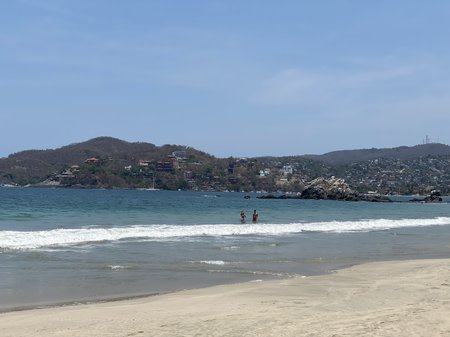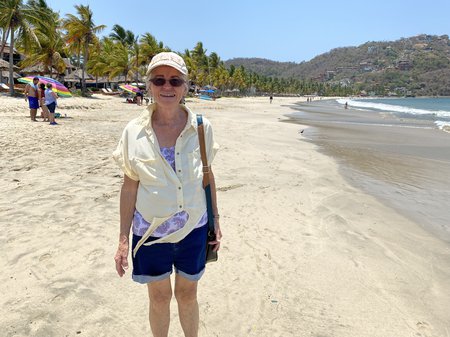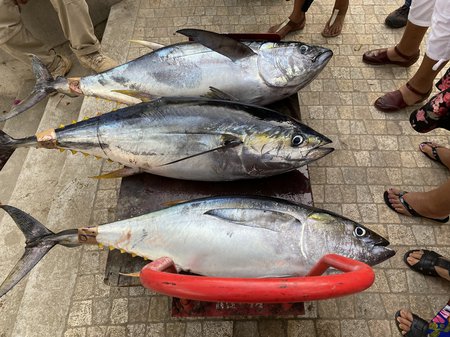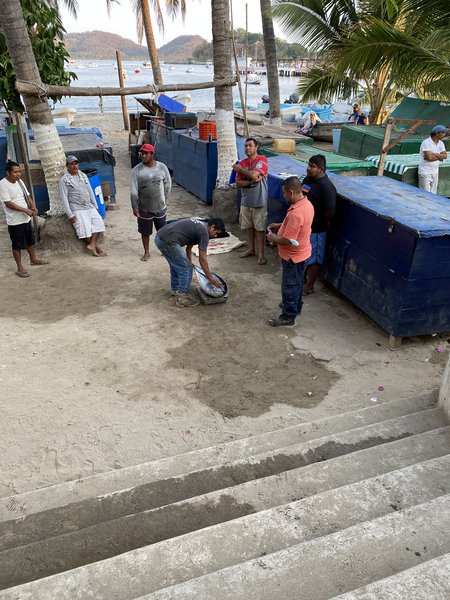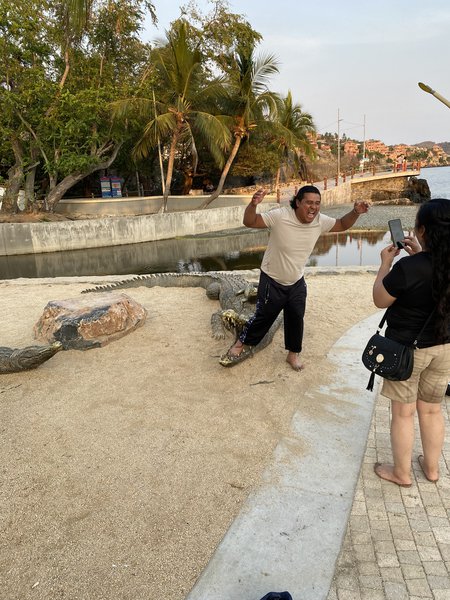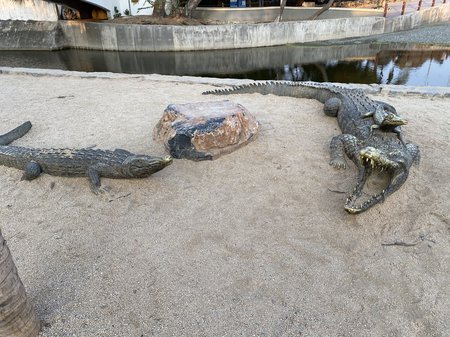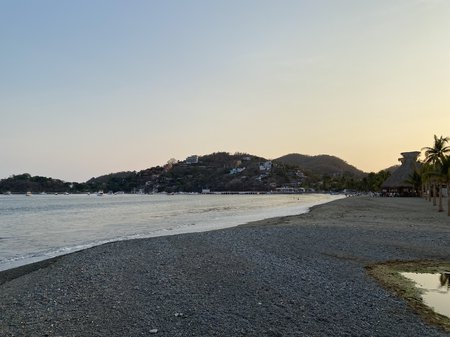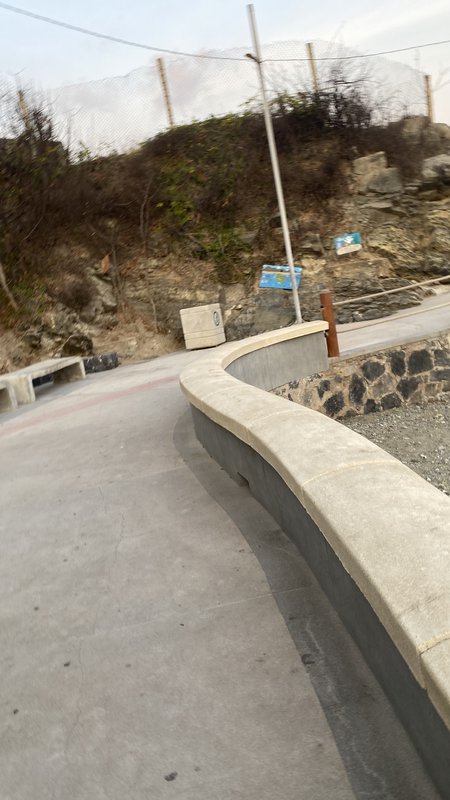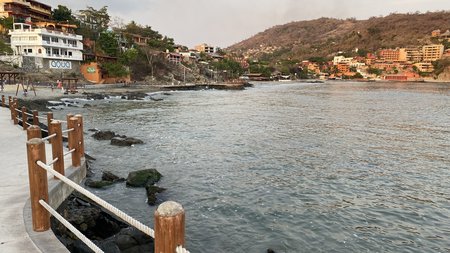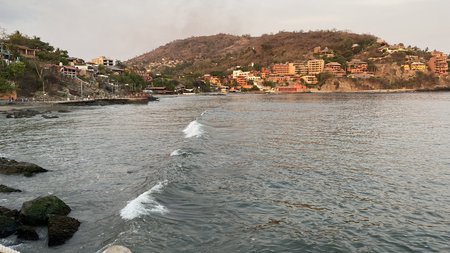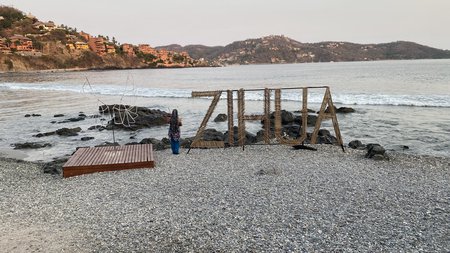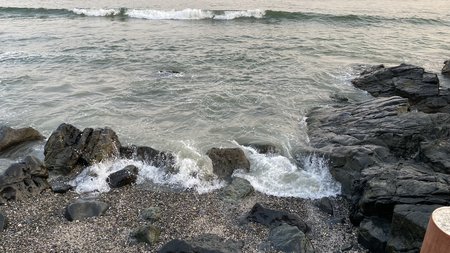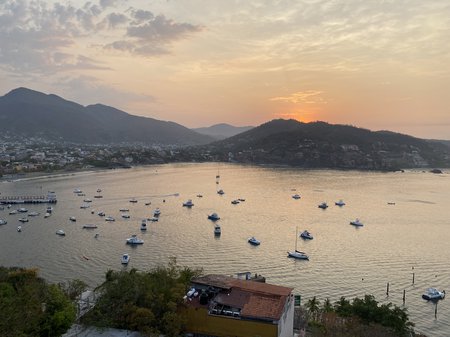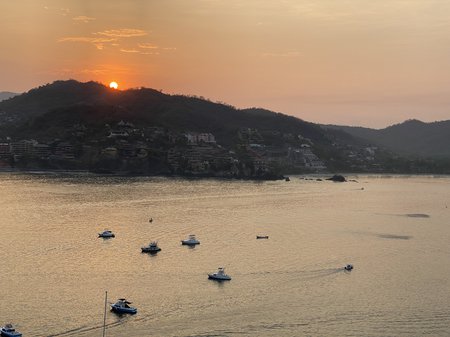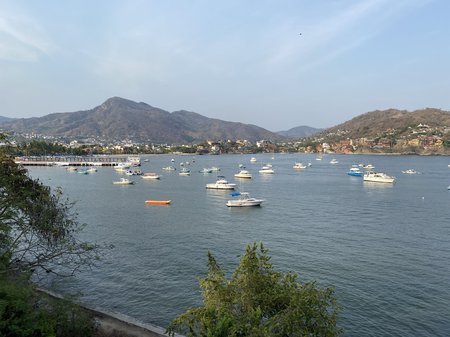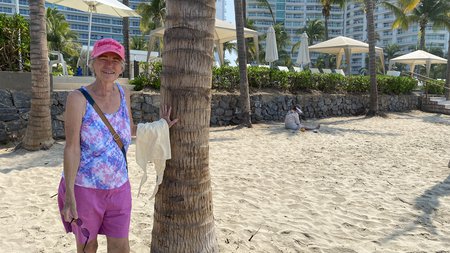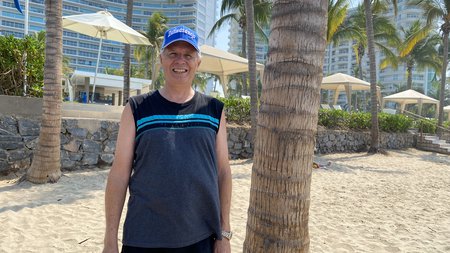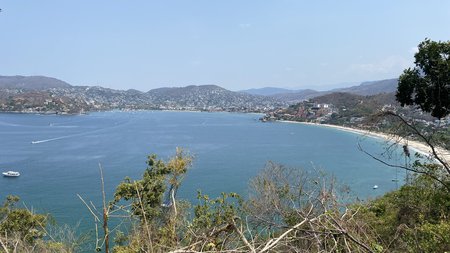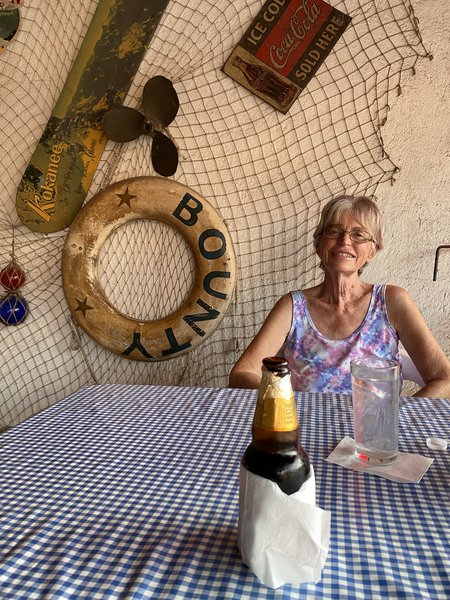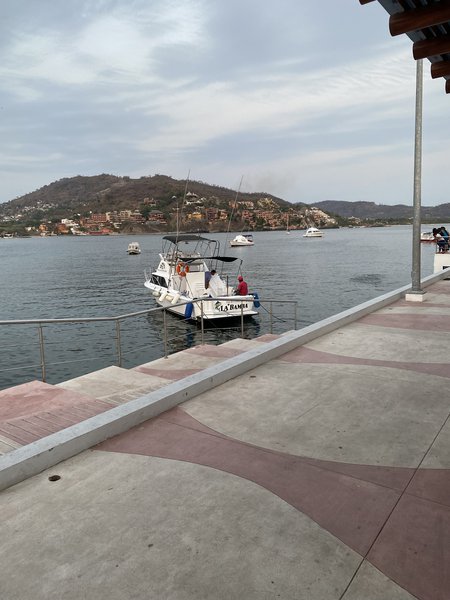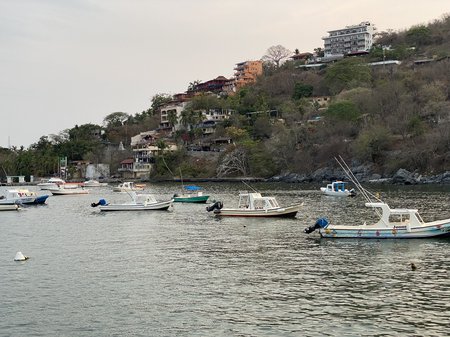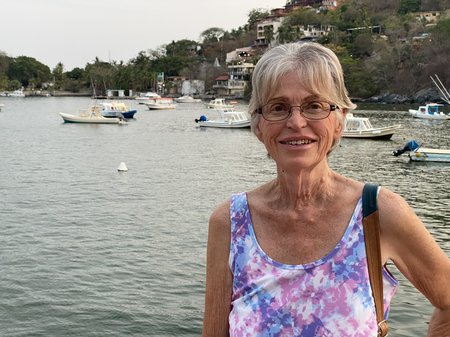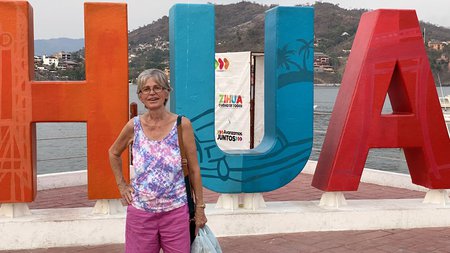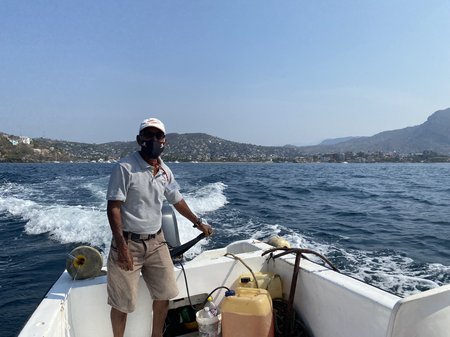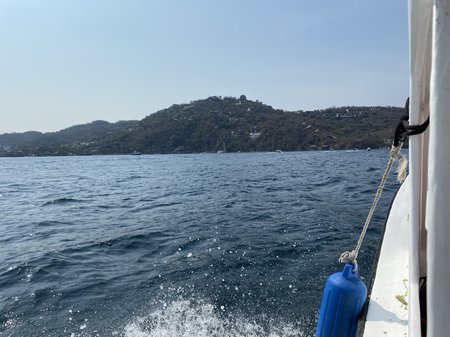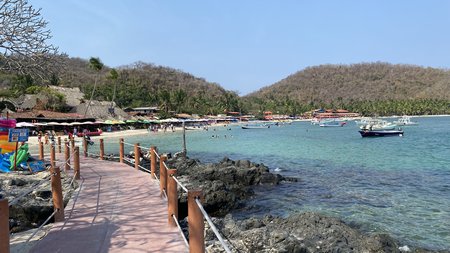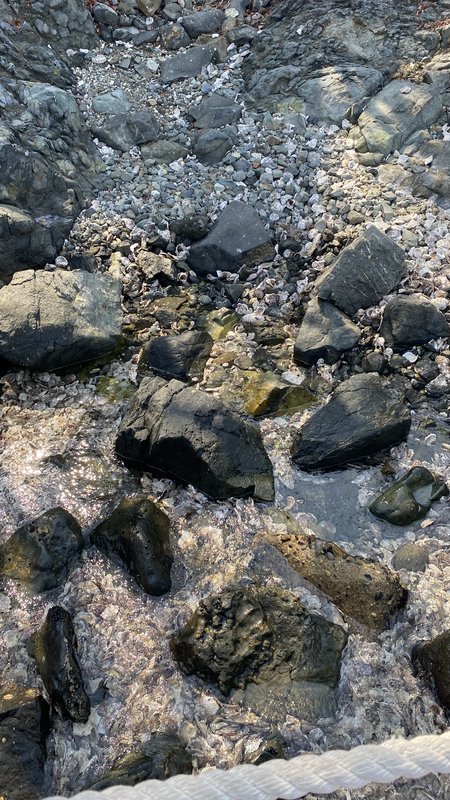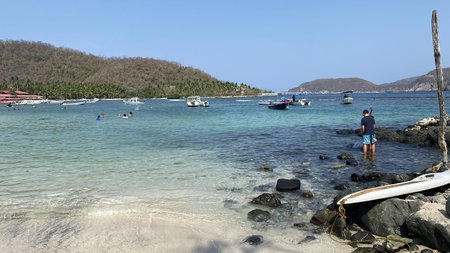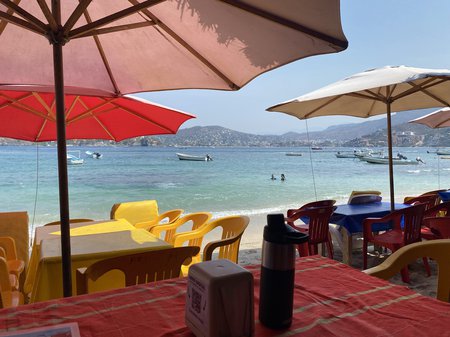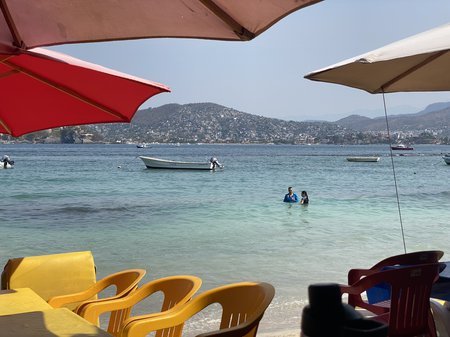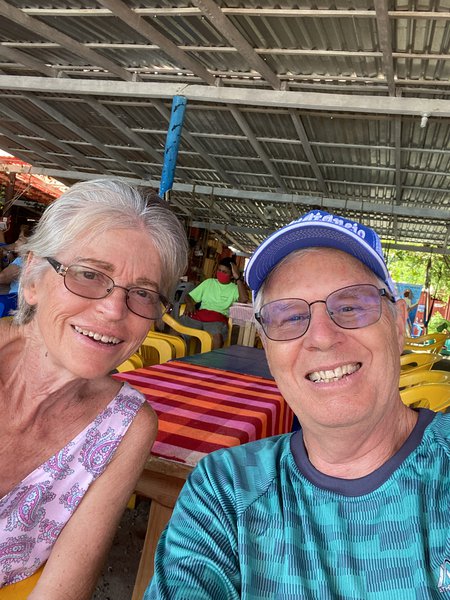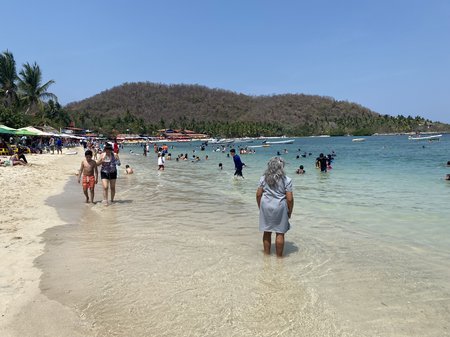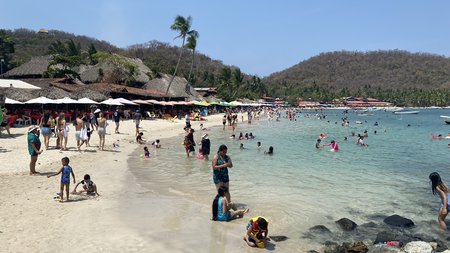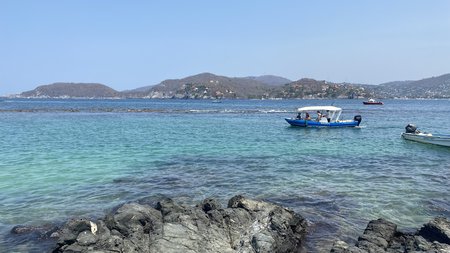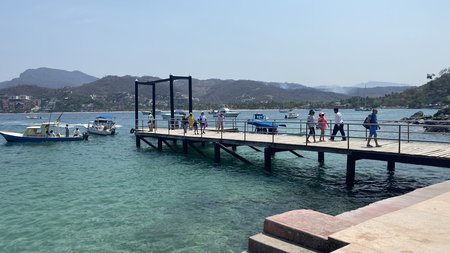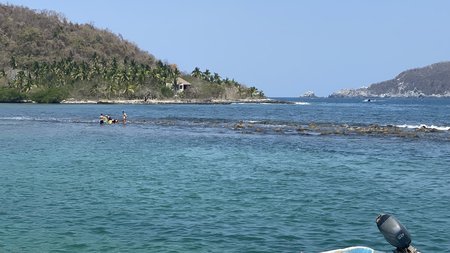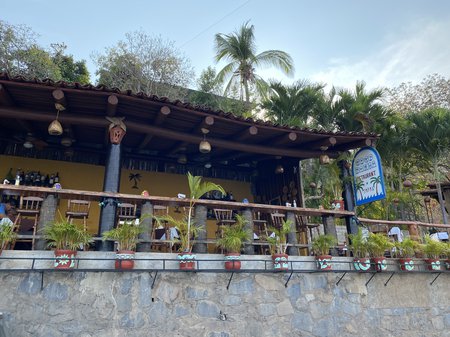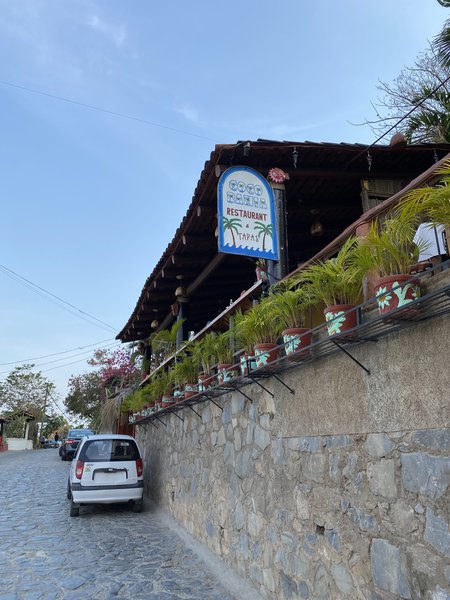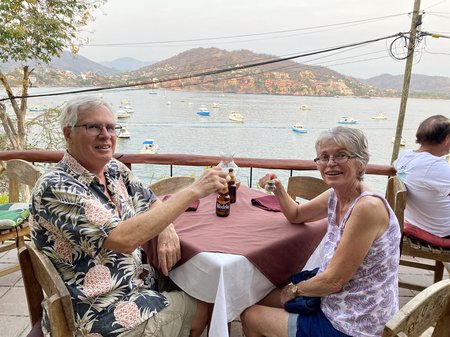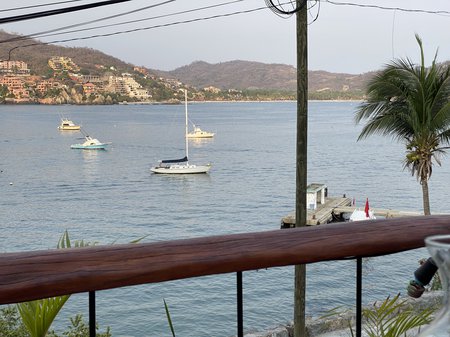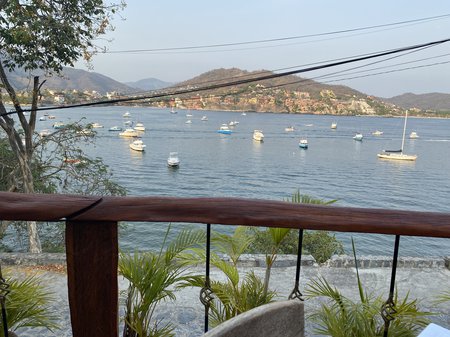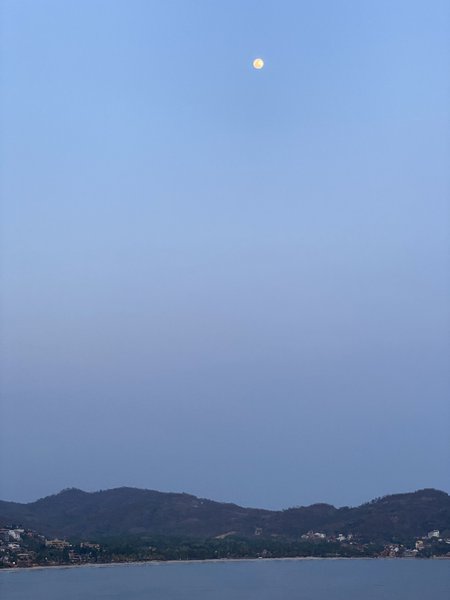Zihuatanejo, Guerrero
We spent five days in Zihuatanejo in a beautiful AirBnb condo overlooking the bay. Zihuatanejo (Spanish pronunciation: [siwataˈnexo]), or Ixtapa-Zihuatanejo, is the fourth-largest city in the Mexican state of Guerrero. It is on the Pacific Coast, about 240 km (150 miles) northwest of Acapulco and 411 km (260 miles) further south in latitude than Honolulu, Hawaii. Zihuatanejo belongs to a section of the Mexican Pacific Coast known as the Costa Grande. This town has been developed as a tourist attraction along with the modern tourist resort of Ixtapa, 5 km (3.1 mi) away. However, Zihuatanejo has kept its traditional town feel. The town is located on a well-protected bay which is popular with private boat owners during the winter months.
The ring of beaches of Zihuatanejo Bay begins with the Municipal Beach which is in front of the town center and next to the port. From there, there is a cement and sand walkway that leads to Playa Madera (Wood Beach). It is a 2-kilometer (1.2 mi) stretch of light-colored sand between the municipal beach and Playa La Ropa.[3] The waves here are gentle with the occasional wave. This beach contains a number of bay-view restaurants, bungalows, condominiums and hotels, as well as a walkway that extends the length of the beach. Part of the beach is covered in pebbles.
Moving away from the town center along the bay, the next beach is called Playa La Ropa (Clothes Beach). The name Playa La Ropa (Clothes Beach) refers to the sinking of a merchant ship near the bay during colonial times. Its cargo of fine silks, belts, cloaks and fabrics from Bombay washed up in this beach. This beach is about 1.2 km (0.75 mi) long and considered the best for swimming as there is little wave action. During the winter months, many sailboats moor here. Just behind the beach, the land rises suddenly into cliffs, which are dotted with hotels, large residences and guest houses.
Playa Las Gatas (Cats Beach) is on the opposite side of the bay from town, is accessible only by boat as there are no paved roads that lead to here and a small, poorly defined, rocky footpath leading from Playa La Ropa. Las Gatas was originally named for a small cat shark that used to inhabit these waters. It is located at the entrance to the bay at a place called Punta del Rey (King's Point). This leaves the area open to ocean breezes. Wave action is stronger, but not as strong as those beaches that face the open ocean as there is a coral reef and a man-made stone barrier in front of it. According to legend, Purépecha chief Calzontzin had a stone barrier built here to keep the waves down and the sea creatures out, creating a kind of swimming pool. Las Gatas is the most popular snorkeling beach in Zihuatanejo. Gear can be rented at Carlo Scuba, along with PADI instruction and certification. Colorful tropical fish can be seen along the man-made breakwater, as well as the abundant coral and sea urchins. At the far end of the beach surfing is possible, and a path leads to the lighthouse on the point of the bay.
